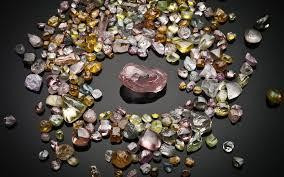INTRODUCTION
Diamonds have long been revered for their beauty, rarity, and status as a symbol of luxury. However, the diamond industry has faced scrutiny for its environmental and ethical impact, leading to the rise of Lab Made Diamonds as a compelling alternative. These man-made gems, also known as cultured or synthetic diamonds, offer a sustainable and socially responsible choice for consumers without compromising on the allure and elegance of natural diamonds.
Lab-made diamonds are created in controlled laboratory environments that simulate the conditions under which natural diamonds are formed deep within the Earth's crust. Advanced technology, such as high-pressure high-temperature (HPHT) and chemical vapor deposition (CVD), is utilized to replicate the natural diamond growth process, resulting in diamonds that are chemically, physically, and optically identical to their natural counterparts.
One of the most significant advantages of lab-made diamonds is their minimal environmental impact. Traditional diamond mining requires extensive excavation, leading to habitat destruction, soil erosion, and water pollution. In contrast, lab-made diamonds require significantly fewer resources and have a smaller carbon footprint.
Study by Frost & Sullivan
The energy consumption associated with creating a one-carat lab-made diamond is approximately 250 million BTU, while mining and processing a natural diamond of the same size can consume up to 5385 million BTU. Lab-made diamonds also eliminate the need for harmful mining practices, including the exploitation of workers and the potential for conflict diamonds.
Another key benefit of lab-made diamonds is their ethical traceability. Natural diamonds often pass through a complex supply chain, making it challenging to ensure their origins and guarantee they are fre
e from human rights abuses. On the other hand, lab-made diamonds can be traced from their point of creation, providing consumers with confidence in their ethical sourcing. Many Lab Grown Diamond producers have embraced transparency by adopting third-party certification processes, enabling customers to verify the authenticity and ethical standards of their purchases.
Terms of Quality and Beauty,
Lab Made Diamonds are virtually indistinguishable from natural diamonds. They possess the same brilliance, fire, and durability, and are graded using the same universally accepted criteria as natural diamonds. Whether it's the classic colorless diamonds or fancy colored diamonds, lab-made options offer a wide range of choices to suit every taste and occasion.
Moreover, lab-made diamonds provide a more affordable alternative to natural diamonds. The controlled production environment and streamlined supply chain enable manufacturers to offer these gems at a fraction of the cost of their natural counterparts. This accessibility has opened up new possibilities for individuals who desire the beauty of diamonds but may have been previously deterred by the high price tag.
As lab-made diamonds gain recognition and popularity, they are redefining the concept of luxury. The sustainable and ethical aspects of these diamonds align with the values of an increasingly environmentally conscious and socially responsible consumer base. With their identical physical properties and lower environmental impact, White HPHT Diamonds offer a guilt-free luxury option for those who wish to adorn themselves with exquisite jewelry while making a positive impact on the planet.
CONCLUSION
Lab Made Diamonds represent the future of sustainable luxury. These diamonds offer a socially responsible and environmentally friendly alternative to natural diamonds without compromising on quality or beauty. As consumers become more conscious of their purchasing decisions, lab-made diamonds provide a compelling choice that aligns with their values and contributes to a more sustainable and equitable future for the jewelry industry.
READ MORE:

